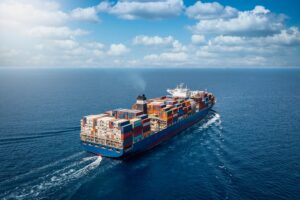Competition is growing and margins are shrinking. Importers need to know what is affecting their ability to profit on every transaction so they can maximize profit on every shipment they bring in.
As a U.S. based importer and distributor you need to be asking yourself the following questions:
- Is this business making a profit?
- How do I know if I’m profitable?
- Where can I cut costs?
- How do I increase revenue?
Traditional accounting systems offer the ability to track profitability by calculating an average cost at the product level (for a given time period) and matching that against an average sale price for the same period. This is an excellent method if you buy and sell goods domestically because costs may not vary very much from one transaction to the next and an average of those costs can give you an accurate enough picture of how you are doing. For an importer, averages are simply not enough.
Costs vary on a per shipment basis based on fluctuation in duty rate, shipment charges based on distance, fluctuation in exchange rates, and dozens of other costs. For this reason, averaging these out does not give us an accurate picture of which transactions are making money and which are not.
Landed Costs
The most common method for importers to measure profitability is called the “landed cost” method. This refers to keeping a running tally of all the costs associated with importing the goods including:
- Materials
- Duty
- Freight
- Insurance
- Loading
- Unloading
- Customs Broker Fees
- Refrigeration
- Warehousing
- Taxes
- Surcharges
- Bank Fees
- Inland freight
- And many others
These costs are commonly calculated on Excel spreadsheets outside of the accounting system and then re-entered as Accounts Payable into the accounting system.
Automating Landed Cost Calculation
Using an importer specific system all inventoriable costs are entered once into the system and tracked at the “venture” (a specific product within a shipment) level. Costs such as freight are entered once and applied towards all products within the shipment using one of many possible “cost distribution methods” including:
- By weight
- By quantity
- By value
- By volume
- By accrual (auto-fill)
- By weight
- Equally
- Manually (or open)
- By percentage
- Custom distribution methods
This information can then be viewed on a per transaction basis or can be reported on to supply information about gross costs by cost type, etc.
The benefit of this information is invaluable because it allows you to make informed decisions about which vendors to use, as well as a wealth of related information.
Knowing Your Costs Before They Come In
In addition to knowing your actual costs as they come in, it is critical to be able to estimate your costs so you can begin selling goods at a price that allows for profit before the goods are received. To do this, the importer will need estimates or accruals of the largest costs associated with the transaction. Typically these accruals will include: material, duty, and freight although depending on the industry, there could be some significant other expenses that make up the total cost.
It is critical that users be able to create these accruals and as bills come in from the vendors, the actual costs are entered and the importer is able to see an ever more increasingly accurate cost of the associated shipment. This allows the user to start making informed decisions about costing before even the first bill comes in.
Measuring Profit
Although significant, costing is only half of the story when looking at profit/loss. Unfortunately for importers, until recently, the idea of getting actual profitability analysis (per transaction) was only theoretical. Standard accounting systems do not allow for “unit level matching”, meaning, once goods are received they are put into inventory losing all of the associated costing information. Then when goods are sold, they are pulled from inventory where at best you may get the material cost (or average cost) which is marked up and sold, hopefully for a profit. All other costs are viewed by the accounting system as overhead.
The new wave of importer specific enterprise systems have revolutionized this industry by matching a sale with the specific units in inventory (in transit, on hand, or at source). Those units carry with them the latest projected cost of the unit as well as all of the logistics and documentation associated with that specific inventory. By comparing the sale price with the landed cost (or latest projected cost), the system is providing true profitability analysis.





